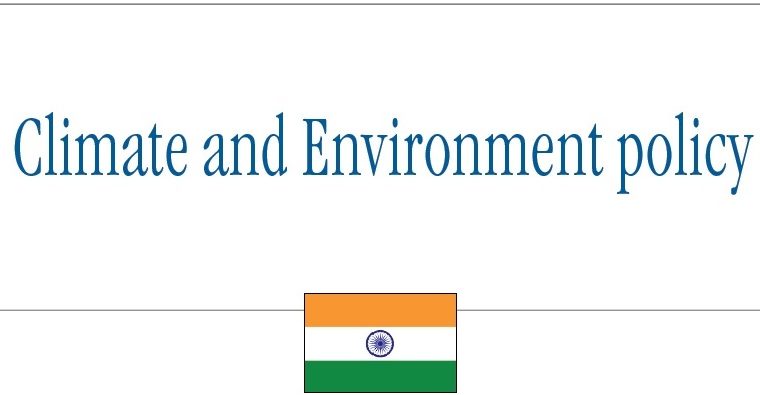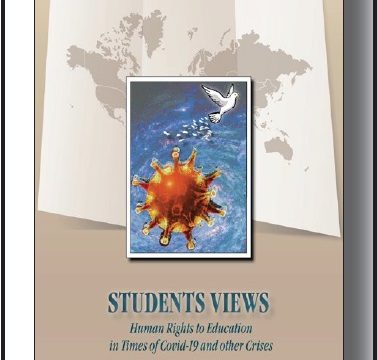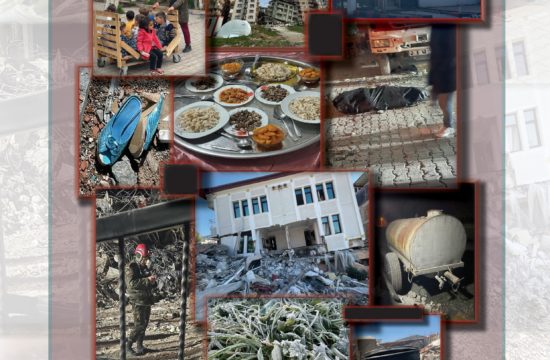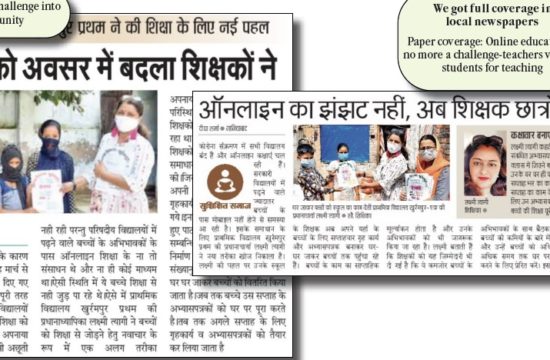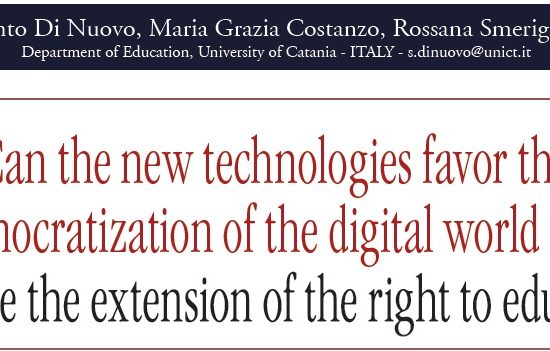Prof. Sanjoy Roy – Department of Social Work, University of Delhi, INDIA
Rituparna Dey – PhD Research Scholar, University of Delhi, INDIA
including the rights to health, food, water, and sanitation, must be fully enjoyed in a safe, healthy, and sustainable environment. The exercise of these rights is endangered by climate change. States have a responsibility to stop the predictable negative effects of climate change. They also owe it to those impacted by it, especially those in vulnerable positions, to make sure that they have access to treatments and methods of adaptation so that they can live dignified lives. (United Nations)
There is abundant evidence that the climate is changing. Regardless human mitigation efforts, historical emissions obligate the planet to some degree of future warming and will likely exceed the 2C mark that many consider to be indicative of „dangerous“ interference. Failure to establish a worldwide framework for stabilising emissions makes the likelihood of 4C of global warming by 2100 increase. Adaptation cannot be avoided. Opportunities for adaptation are open, attainable, and comprehensible within current governmental priorities. It’s important to note that the difficulty of adaptation is not inherently new because humans have historically adjusted their management practises to deal with climatic fluctuation. Despite these possibilities, questions have been raised about how well human systems will be able to adapt due to the magnitude of the anticipated effects, current vulnerabilities, and insufficient focus on adaptation. Extreme catastrophes have even exposed serious gaps in prevention and readiness in wealthy countries. (Ford, L.B., Ford, J.D. & Paterson, J. 2010)
Different definitions of climate change are used by the Framework Convention on Climate Change (FCCC), which focuses on global policy, and the Intergovernmental Panel on Climate Change (IPCC), which focuses on scientific assessments in support of the FCCC. Both politically and possibly even scientifically, the two meanings are incompatible. Because climate change is real and action is required to improve energy policies and lessen the susceptibility of people and ecosystems to its consequences, this lack of coherence has played a role in the current international deadlock on climate policy. Either limiting greenhouse gas emissions or absorbing and sequestering such emissions are the main objectives of mitigation measures. The main goal of adaptation policies is to strengthen the resistance of social and natural systems to the consequences of climate change. A mix of mitigation and adaptation measures is necessary for effective climate policy. However, due in large part to the various definitions of climate change, climate policy has over the past ten years shown a bias towards adaptation. (Pielke, R.A., 2004)
Because many environmental issues transcend national boundaries and can only be resolved via international cooperation, international environmental policy is particularly crucial at a time when globalisation is accelerating. The protection of the climate, policies promoting renewable energy, the maintenance of biological diversity, and the preservation of forests, seas, and soils are all covered under international environmental policy. Desertification, environmentally friendly waste management, and safeguarding against dangerous compounds are further linked themes. Nearly all of these problems require comprehensive approaches to make sure that environmental preservation is taken into account in other policy spheres as well, such cooperation with developing nations. UNEP (United Nations Environmental Program) was established by the United Nations in 1972. Since then, the number of environmental accords covered by the United Nations has continuously increased. The „Montreal Protocol on Substances that Deplete the Ozone Layer“ was the first. At the Rio de Janeiro Earth Summit in 1992, international relations were centred on widespread environmental issues. The Kyoto Protocol, the Convention on International Trade in Endangered Species, the Basel Convention on the Control of Trans boundary Movements of Hazardous Waste, and the Stockholm Convention on Persistent Organic Pollutants are just a few of the conventions that came after, including the Framework Convention on Climate Change and the Convention on Biological Diversity. Germany, Japan, Great Britain, the United States of America, France, Italy, Canada, and Russia make up the G8. The environment has long been on the G8 agenda. The goal is to convey a strong message on pressing environmental challenges, including the preservation of the global oceans, biodiversity, forests, and the climate. A long-term global climate protection goal was established in 2007 under the German G8 Presidency, with the goal of at least halving global greenhouse gas emissions by 2050. The G8 states agreed in 2009 that keeping global warming to 2 degrees Celsius was necessary in the lead-up to the climate conference in Copenhagen. The G20 rose to prominence as a major role in the new „global governance“ in reaction to the world economic and financial crisis. China, India, Brazil, Mexico, South Africa, Australia, South Korea, Indonesia, Argentina, Saudi Arabia, Turkey, and the EU are G20 members in addition to the G8 nations. Thus, the changeover from the G8 format to the G20 format has begun. Germany thinks it would be beneficial for the G20 to focus heavily on topics other than financial policy, such environmental and development policy. The G20 must first decide what role it must play, though. (Federal Ministry for the environment, nature conservation, nuclear safety and consumer protection)
For instance, India made significant commitments in 2021, putting climate change at the forefront of its environmental policy. Prime Minister Narendra Modi said that India is the only nation upholding the Paris Agreement „word and spirit“ at the key international climate summit COP 26. India took the lead on environmental problems this year, attracting attention from all over the world with its pledges to become a net zero emitter of carbon by 2070 and to reach 500 gigawatts of non-fossil energy capacity by 2030. As part of the India-US Climate Clean Energy Agenda 2030, India and the US embarked into the Climate Action and Finance Mobilization Dialogue (CAFMD), which aimed to give both nations the chance to continue their climate change partnerships while tackling the finance issues. A law that first called for punishing farmers who polluted the environment by burning stubble was enacted by the Parliament, leading to the creation of the Commission for Air Quality Management (CAQM). This clause was later removed, though. (PTI, 2021)
In many developing countries, poor and vulnerable individuals are more adversely impacted by the changing climate and its attendant uncertainties. Despite the fact that the bulk of the population in poor nations is utterly dependent on the agriculture, forestry, and fishing industries for their subsistence, these industries are the main ones that are most vulnerable to climate change. Issues including limited access to drinking water, food instability, and related health problems are mostly caused by climate change. In contrast to high income groups in developing nations, Dietz and Stern (2009) found that the marginalised population is more affected by climate-related occurrences. According to Bridges (2016), the Scheduled Caste and Indigenous populations in India are negatively impacted by climate change. Many people have been impacted by climate change, especially vulnerable or socially excluded populations. Olsson et al. (2014) provided a thorough analysis of how climate change affects the underprivileged population in emerging nations. The majority of developing nations, especially those with vulnerable populations, lack adequate adaptation methods. In our society, vulnerable groups must overcome two obstacles. First, because the majority of them rely heavily on industries that are sensitive to climate change as a major source of their income and employment, major environmental problems like pollution, water contamination, improper solid waste disposal, land degradation, forest degradation, and lack of access to natural resources on the one hand are factors that lead to the loss of their livelihood. They also struggle with low levels of literacy, unemployment, low income, and lack of access to electricity, on the other hand. Many underdeveloped nations lack any kind of the ability to make decisions in society. According to Fankhauser and Stern (2016), climate change has uneven effects on different nations and populations on a global scale. Additionally, underdeveloped nations exhibit weaker coping strategies for mitigating the negative effects of climate change and adjusting to it. Vulnerable populations‘ lives and livelihoods are being significantly impacted by climate change and its associated hazards. They also struggle with low levels of literacy, unemployment, low income, and lack of access to electricity, on the other hand. Many underdeveloped nations lack any kind of the ability to make decisions in society. According to Fankhauser and Stern (2016), climate change has uneven effects on different nations and populations on a global scale. Additionally, underdeveloped nations exhibit weaker coping strategies for mitigating the negative effects of climate change and adjusting to it. Vulnerable populations‘ lives and livelihoods are being significantly impacted by climate change and its associated hazards. (Balasubramanian, M., Manjunath, M., Remadevi, O.K., Vinaya Kumar, K.H., Singh, RK. & Kakkar, R., 2020)
References
• Balasubramanian, M., Manjunath, M., Remadevi, O.K.,
Vinaya Kumar, K.H., Singh, RK. & Kakkar, R., (2020).
Climate Change Impacts on Vulnerable Communities
in Karnataka. Institute for Social and Economic Change.
Retrieved from http://www.isec.ac.in/.
• Federal Ministry for the environment, nature
conservation, nuclear safety and consumer protection.
What is international environmental policy about?
Retrieved from https://www.bmuv.de/en/topics/europe-
international/international/what-is-internationalenvironmental-
policy-about
• Ford, L.B., Ford, J.D. & Paterson, J., (2010). Are we
adapting to climate change? ScienceDirect, Vol 21
(1), 25-33 Retrieved from https://doi.org/10.1016/j.
gloenvcha.2010.09.012
• PTI, (2021). India put climate change at the centre of
its environmental policies in 2021. The Economic Times.
Retrieved from https://economictimes.indiatimes.
com/news/india/india-put-climate-change-at-thecentre-
of-its-environmental-policies-in-2021/articleshow/
88542444.cms
• Pielke, R. A. (2004). What is Climate Change? Energy
& Environment, 15(3), 515–520. Retrieved from https://
doi.org/10.1260/0958305041494576

